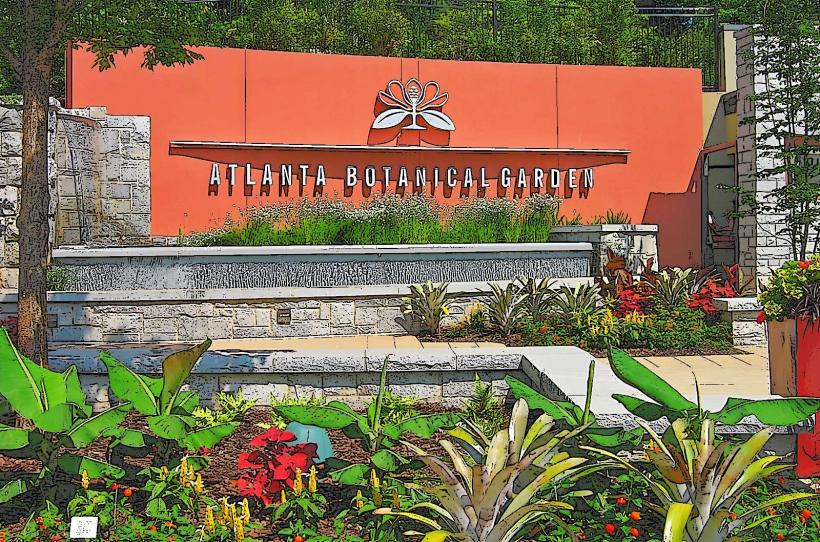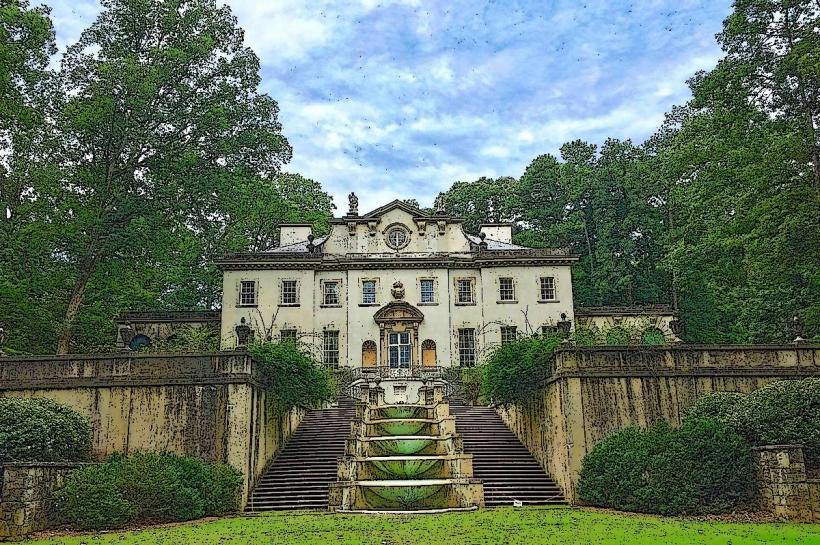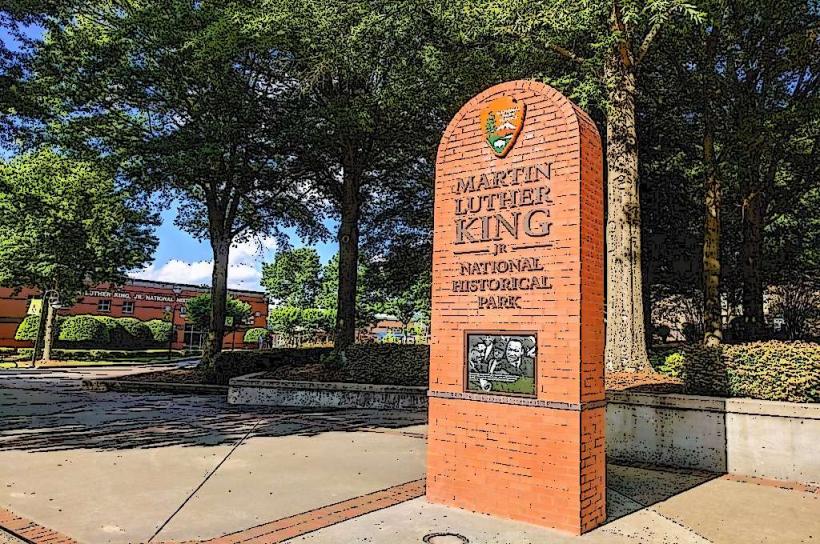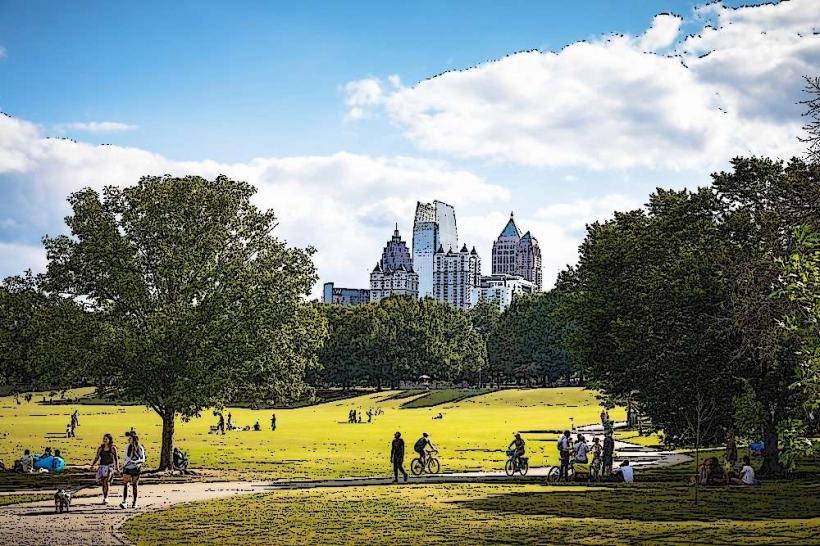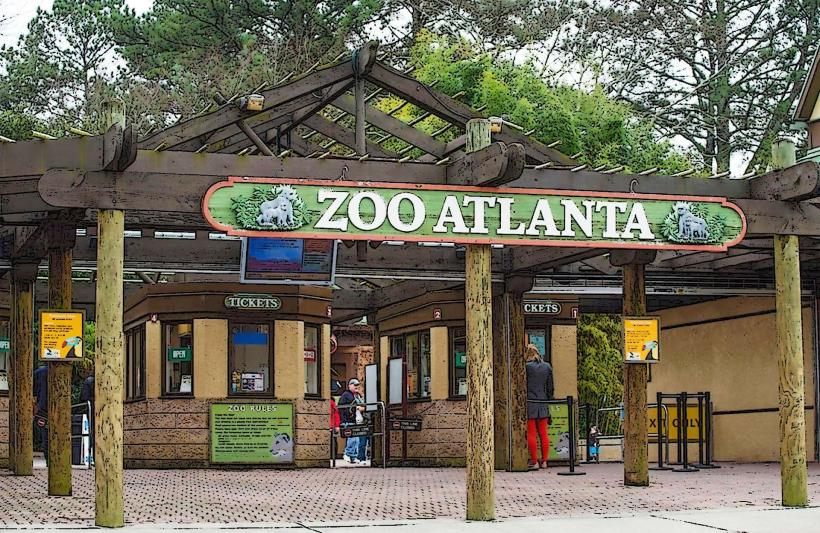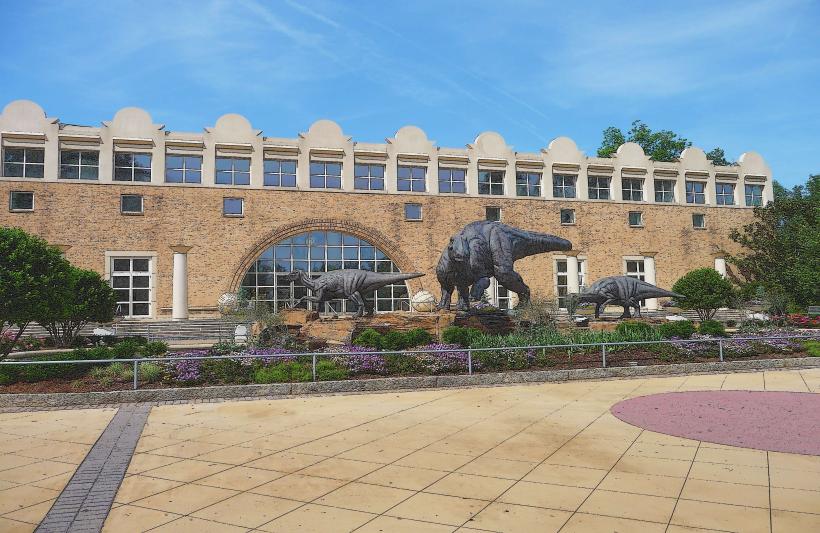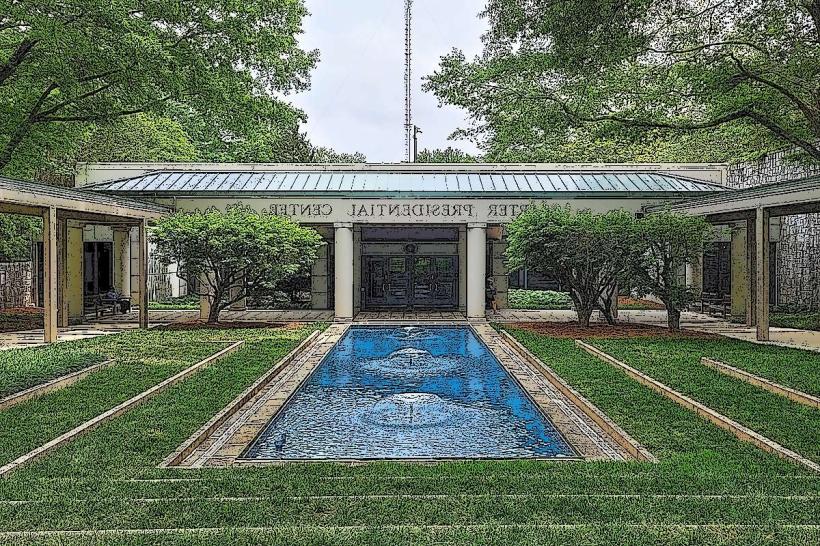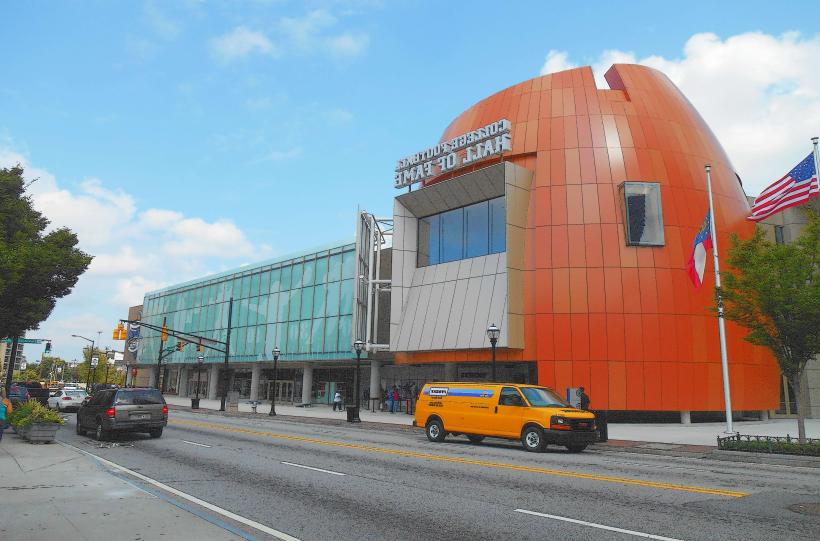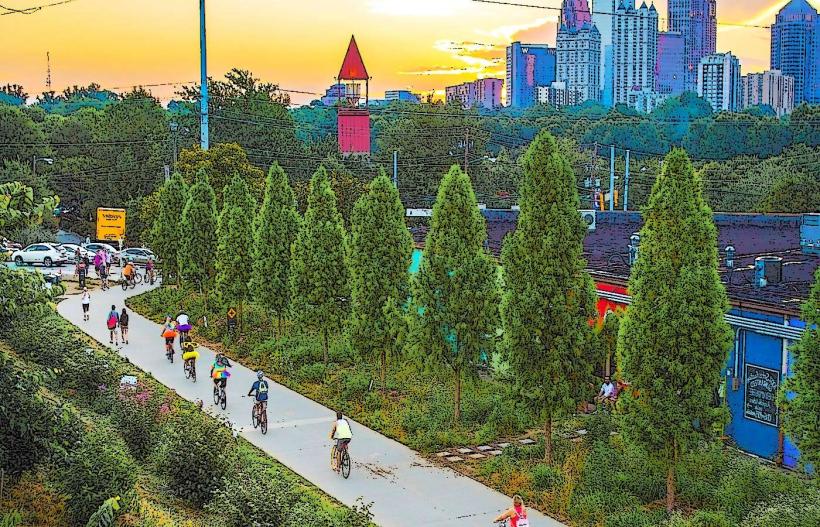Information
Landmark: Toccoa River Swinging BridgeCity: Atlanta
Country: USA Georgia
Continent: North America
Toccoa River Swinging Bridge, Atlanta, USA Georgia, North America
Overview
The Toccoa River Swinging Bridge sways gently above the water in the Chattahoochee National Forest, not far from Blue Ridge, Georgia, offering a striking view of the surrounding hills, and known as the longest swinging bridge east of the Mississippi, it spans 270 feet across the Toccoa River, swaying gently above the rippling water below.Blending sweeping mountain views, trails for every skill level, and a rich past, this bridge draws hikers, nature enthusiasts, and curious travelers into North Georgia’s Appalachian foothills, not only that built in 1977, the bridge came to life through a joint effort between the USDA Forest Service and the Georgia Appalachian Trail Club, its wooden planks still carrying the scent of fresh-cut pine.They built it to take the region of a treacherous ford on the Toccoa River, where rushing water often blocked the way, giving hikers and visitors a protected, dependable crossing, as a result since then, it’s stood as an iconic landmark, valued for its role and cherished as a proud symbol of the region’s outdoor heritage-much like the weathered trail signs that greet hikers at dawn.Built solely for walkers, the Toccoa River Swinging Bridge lets hikers and curious visitors step across high above the river’s rushing, nippy-blue water, furthermore it’s a classic suspension bridge, its thick steel cables stretching to anchors on both riverbanks, holding up a narrow wooden plank walkway that sways gently under each footstep.The way the bridge sways gives crossing it a spark of adventure and a dash of fun-you might feel the boards shift softly under your feet, making the moment hard to forget, as well as from the bridge, you can take in sweeping views of the Toccoa River’s churning rapids, its green, tangled banks, and the dense forest rolling out in every direction.From its high perch, visitors can watch deer slip between the trees, hear water rushing over smooth stones, and observe the leaves shift colors with the seasons, and several hiking trails lead to the bridge, ranging from easy strolls to steep climbs, so it draws both weekend walkers and seasoned trekkers who don’t mind dusty boots.One of the easiest ways to reach the bridge is to drive out Georgia Highway 60, turn onto Forest Service Road 816, and park in the modest gravel lot tucked beside the pines, in conjunction with from the parking lot, it’s a quick 0.2-mile meander through the shaded forest, with pine needles soft underfoot, straight to the bridge.Perfect for families, this route offers a quick escape with views that catch the light just right, subsequently if you’re up for a deeper dive into the woods, the Benton MacKaye Trail winds 3.5 rugged miles to the bridge, with pine needles crunching under every step.The BMT twists through a patchwork of forest, where you might spot native wildflowers, catch a glimpse of deer, or hear the hush of a clear, sluggish-moving stream, what’s more the trail winds over uneven ground and climbs enough to test your stamina, yet it offers quiet stretches and views of pines swaying in the breeze.You know, Outdoor recreation thrives here, with the Toccoa River serving as a centerpiece-its clear, frosty water drawing paddlers, anglers, and hikers to its banks, as well as it’s part of the Toccoa River Canoe Trail, a 14‑mile run where paddlers drift past pine‑lined banks, a favorite for both canoeists and kayakers.As they glide down the river, paddlers take in the lush, tree-lined banks, and the historic swinging bridge creaks gently overhead as a familiar landmark, in addition near the bridge, the river churns into swift rapids-waters best tackled by seasoned paddlers who understand how to read whitewater.The river’s pace shifts with the seasons and changes in weather, so if you’re heading out for kayaking or swimming, stay alert to what’s happening on the water, after that near the bridge, you’ll find several picnic spots where visitors can unwind, share a meal, and take in the rustle of leaves and the scent of fresh grass.In a way, Soft birdsong drifts through the area, mingling with the rush of water, and together they make it the perfect spot for a hike or a lazy afternoon with family, consequently you can pitch a tent along certain stretches of the nearby riverbank, where the grass smells fresh after rain.Campers need to be ready for backcountry conditions-think few bathrooms and no running water-and stick to Leave No Trace guidelines to protect the area’s fragile ecosystem, in turn the Toccoa River Swinging Bridge is sturdy and well-kept, but visitors should still watch their step, especially if the boards are slick from rain.The bridge sways under your feet, which can unsettle some people, so it’s best to keep a steady pace and skip the jumping or wild movements, after that when heavy rain swells the river or storms whip across it, the current can churn hard, so tread carefully if you’re crossing or even standing close to the water’s edge.The bridge sits about 15 miles south of Blue Ridge, Georgia, and you can reach it by following Georgia Highway 60 past rows of tall pines, in turn most people reach the bridge by starting at Forest Service Road 816, where they pull into the minute gravel lot and set off on the quick hike.The GPS coordinates are about 34.7392° N, -84.1702° W-plug them into your phone or type “the bridge” into most map apps, and you’ll get there, meanwhile clear signs mark the way along Forest Service Road 816, making it easy for first-time visitors to find the site without a second guess, partially The Toccoa River Swinging Bridge combines rugged beauty, a taste of adventure, and a story rooted in local history-you can feel the boards sway under your feet as the water rushes below, likewise stretching across the Toccoa River, the longest swinging bridge in the eastern United States offers an exhilarating hike with views of sunlight dancing on the water.You can reach the bridge after a quick hike or as a stop on a longer trek along the Benton MacKaye Trail, and it draws you in, letting you feel the crisp mountain air and truly connect with the landscape, as well as kayaking on the river, a shady picnic under the pines, and rugged backcountry campsites all add to the bridge’s charm, turning it into a must-spot for anyone roaming the Blue Ridge or Georgia’s North Georgia mountains., almost
Author: Tourist Landmarks
Date: 2025-10-03

